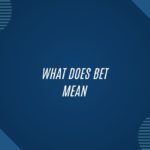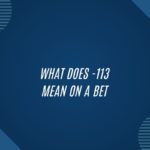Understanding Betting Odds Symbols
Betting odds symbols are essential in the world of sports betting, serving as a universal language for understanding the potential outcomes of a wager. These symbols can appear in various formats but are predominantly represented by the plus and minus signs. Each symbol conveys crucial information about the likelihood of an event happening and the potential payout associated with it.
The plus sign in betting odds indicates the underdog in a match or event. When you see a plus sign before a number, it signifies the potential profit you could make from a successful bet of $100. For example, if a team has odds of +300, this means that a $100 bet on them would yield a profit of $300 if they win. The higher the number following the plus sign, the less likely the outcome is perceived by the oddsmakers.
Explanation of Plus Sign in Betting
When you see a plus sign in betting odds, it indicates the potential profit you could make from a successful wager. The plus sign is typically used for underdogs or less favored teams/players in a match. For example, if a team has odds of +250, it means that a $100 bet on them would result in a $250 profit if they win. The higher the plus number, the greater the potential profit, but also the lower the likelihood of that outcome occurring.
Understanding the plus sign in betting is crucial for assessing the risk and reward of a wager. It allows bettors to quickly gauge how much they stand to win if they bet on an underdog. Keep in mind that these odds are in relation to a $100 bet, so you can adjust the potential profit based on your stake. Betting on the plus side can be enticing for those seeking larger payouts, but it’s essential to consider the likelihood of the underdog prevailing in the competition.
Explanation of Minus Sign in Betting
In sports betting, the minus sign is commonly used to represent the favorite in a matchup. When you see a minus sign in front of the odds, it indicates how much you need to bet in order to win $100. For example, if you see odds of -150, you would need to bet $150 to win $100.
The minus sign also signifies the amount you would win if you were to bet $100. If the odds are -200, it means you would need to wager $200 to win $100. This is a crucial aspect to understand when interpreting betting odds, as it provides insight into which team or player is favored to win the event.
How to Interpret Positive Betting Odds
When it comes to positive betting odds, it signifies the amount of profit a bettor would make for every $100 wagered. For instance, if a sportsbook displays odds of +200 for a team to win, this means that a $100 bet on that team would result in a $200 profit if the team emerges victorious. The higher the positive odds, the more significant the potential profit, but it also indicates a lower likelihood of the outcome occurring according to the sportsbook.
Positive betting odds can be a great indicator of an underdog’s chance of winning an event. Bettors can use these odds to identify potential opportunities to maximize their winnings. By understanding how positive odds work, bettors can make informed decisions on where to place their bets based on the return they could potentially receive relative to the perceived likelihood of the outcome.
How to Interpret Negative Betting Odds
Negative betting odds are a common sight in the world of sports betting and they indicate the favored outcome in a particular wager. When you see a minus sign before the odds, such as -150, it signifies the amount you must bet to win $100. In this example, you would need to wager $150 to earn a profit of $100 if your bet is successful.
It’s important to remember that negative odds represent the favorite in a matchup. The lower the negative number is, the more likely that outcome is expected to occur. For instance, if you come across a line with -300 odds, it means that the team or player associated with those odds is heavily favored to win, but you would need to risk $300 to make a $100 profit.











